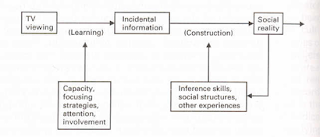The Historical Perspective:
He discussed the negative impact of mass media products with special references to advertising. He maintained that in cinemas still pictures of certain items, in this case, Coca-Cola, inserted in a film reel increased the volume of drinks sold, as the audience would see the drink and get thirsty.
Significantly, the audience were not aware of the pictures, however, Packard claimed that subconsciously our brains register them.
Another example of this can be seeing other images and out register them to have a meaning.
Media Effects Debate:
This is an academic and social debate about wether media has an negative impact on different audience members.
There are two different opposing thoughts:
-Passive Audience Theory: the media does have an effect.
-Active Audience Theory: the media does not have an effect.
Passive Audience Theory:
This theory references to Packard's ideas. The idea is that the media can inject ideas into people's heads like a 'hypodermic syringe'. Being 'passive', the audience has little resistance to media messages. The fear is that audiences will copy what they see on screens.
Gerbner and Gross:
In 1978, Gerbner and Gross developed the idea of 'Cultivation Theory'
This theory suggests that, over time, repetition of viewing violent acts allows certain ideas and values to become 'normalised'. Repeated watching of violent films, TV programmes and video games would lead to viewers becoming 'desensitised'.
Active Audience Theory, which can be also known as Uses and Gratification Theory, maintains that audiences do not just receive information passively, but are actively involved.
The Theory stresses that if the audience does not like a certain media text, they will not consume it. Media producers spend a lot of time making sure their products will appeal to an audience. The audience are seen as active, selecting from a wider range of media texts. The Theory also maintains that audience members make sense of media messages within their own personal and social contexts.
Some theorists argue that an active audience selects media texts for their own purposes.
Catharsis - some theorists argue that experiencing violence second-hand through the media can enable us to release violent feelings and actually be more peaceful.



No comments:
Post a Comment